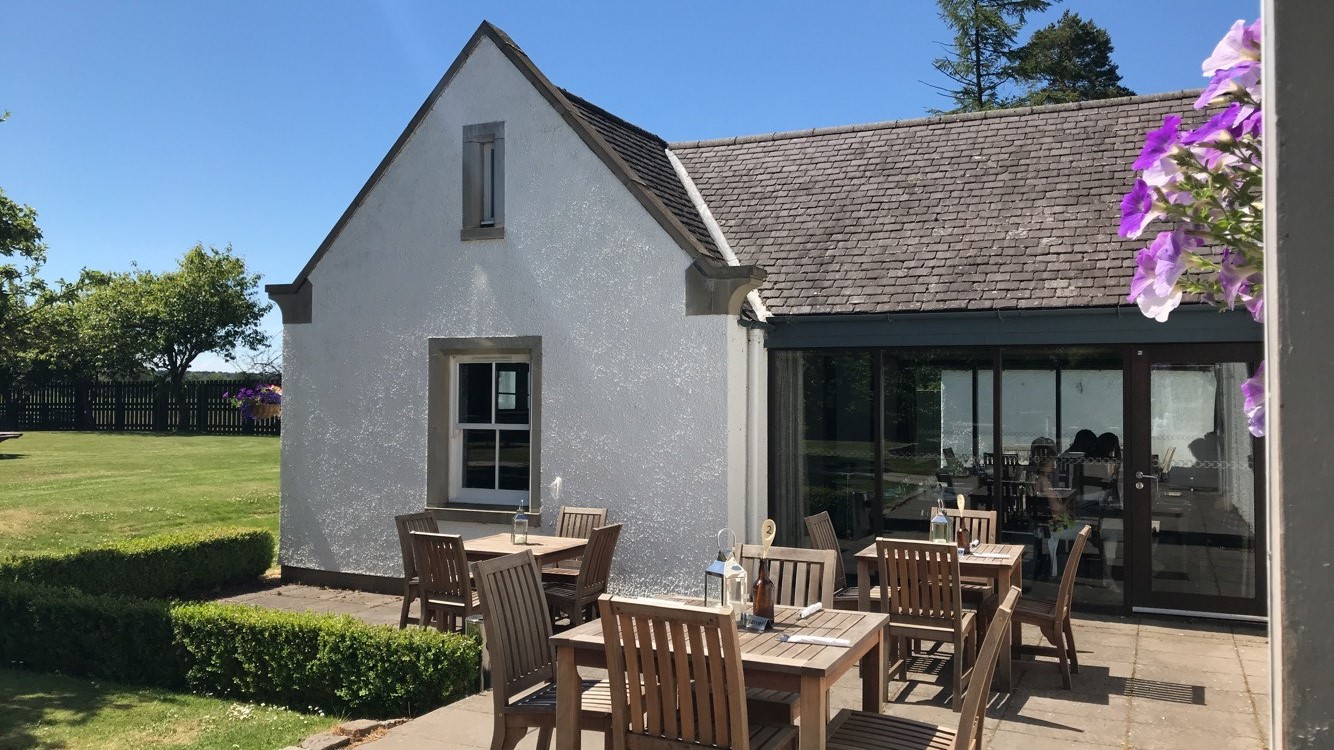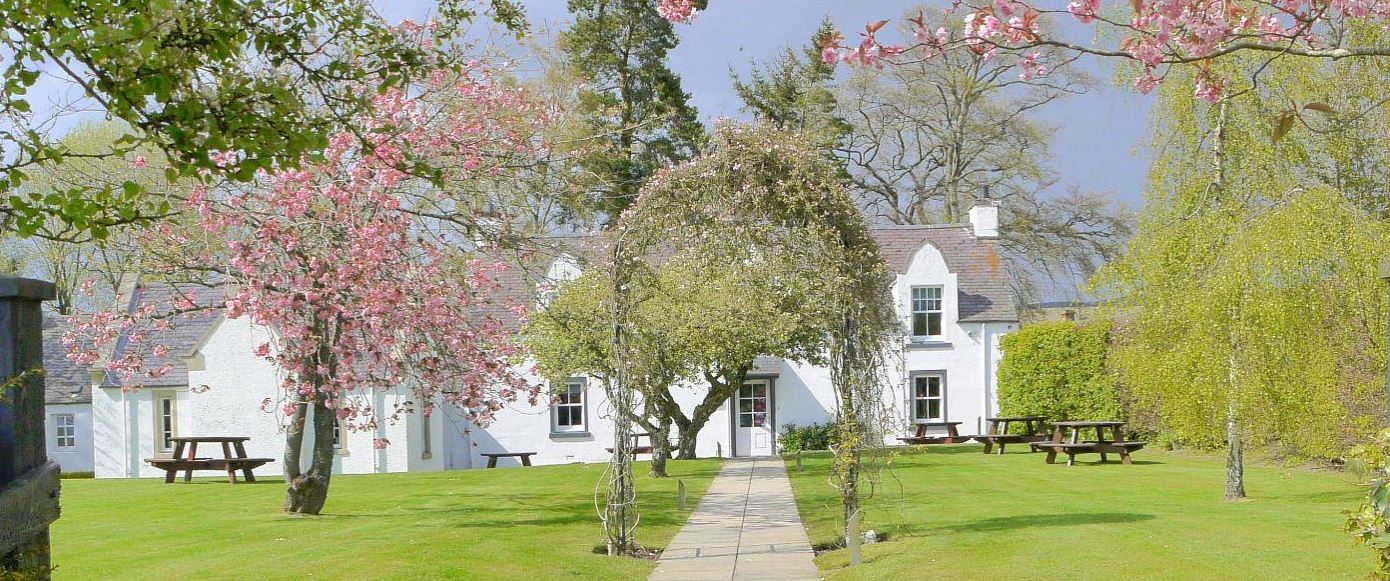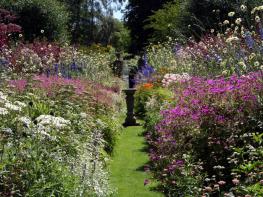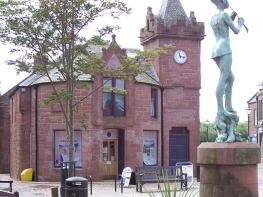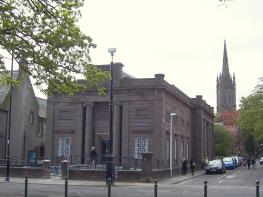It's worth a detour off the main road to check out Gordon's. The food in the restaurant has been…
A Pictish trail at Aberlemno

5 miles (8kms)
About the walk
The fertile lowlands of Angus, between the Firth of Tay and the Cairngorm highlands, were the heartland of the mysterious Picts, who held sway over much of the northeast for thousands of years. We know little about them, and what we do know is apocryphal and comes from others who encountered them, from the Romans who clashed with them in the first century AD to the Christian missionaries who set out to convert them in the fifth and sixth centuries. The best reminders we have of them are the symbol-stones that dot eastern Scotland, most of which are found in Angus and around the Moray Firth. You’ll see several of these on this walk.
The painted ones
We don’t even know what these ancient people called themselves – reputedly, the Romans dubbed them ‘Picti’, or ‘painted’ – from their habit of dyeing or tattooing themselves with the blue juice of the woad plant. The Roman general Agricola defeated a Pictish army at the battle of Mons Graupius in AD 84, but the Romans never again ventured so far north, falling back instead on the Forth–Clyde line and eventually to Hadrian’s Wall.
More recently, the Picts have inspired some highly imaginative writing, from Rudyard Kipling’s On the Great Wall (1906) and Robert E Howard's creation of 'Conan the Barbarian' in the 1930s to Rosemary Sutcliffe’s Sword at Sunset (1963) and Terry Pratchett’s hilarious Wee Free Men (2003).
The battle for Pictland
After the Roman withdrawal from Britain, the Picts clashed with the Angles who settled in Northumbria and pushed north; with Gaelic-speaking settlers from Ireland, who pushed west from their beachhead in Argyll; and with the Britons of Strathclyde. The Anglian threat ended with the decisive battle of Nechtansmere, where the Pictish king Bridei map Bili wiped out an invading army led by Ecgfrith, a prince of Northumbria, killing Ecgfrith and all his bodyguard. The battle was fought near Aberlemno, and an elaborately carved stone in the village kirkyard portrays Bridei’s victory, with Pictish cavalry charging Northumbrian spearmen. It’s like a graphic novel in stone, and the final scene shows Ecgfrith dead on the battlefield while a raven pecks at his flesh.
As well as fighting these incomers, Pictish rulers and nobles intermarried with some of them, creating a kingdom that fused Pictish and Scottish customs. In AD 843, after a decade of infighting between contenders for the throne, the Scots leader Kenneth MacAlpin made himself king of both Picts and Scots. Pictland persisted as a separate entity until the mid-10th century, before finally being absorbed into the Gaelic kingdom of Alba – the forerunner of modern Scotland.
Walk directions
From the car park opposite the Pictish stones, turn right and walk along the road, then go first left, signed 'Aberlemno church and stone'. Walk past the church – there's another Pictish stone to see in the churchyard – and follow the road as it bends round to the right, to reach a T-junction.
Turn right and follow this road, passing the entrance to Woodside on the left. At the corner, follow the road as it bends right. Walk down to join the B9134, the turn right and follow this a short distance until you reach a turning on the left.
Turn left along this road, signed 'Finavon Hill'. The road winds uphill past several outcrops, then under a line of pylons. Continue on this road as it skirts a hill.
Continue following the road uphill, passing a small loch half-hidden in woodland to the left. Shortly after this, you reach an old stone wall on your right. Just beyond a gate in the corner of a field, climb over the wall.
Head uphill now to explore the turf-covered ramparts of Finavon vitrified fort. Dating from the seventh century BC, the hilltop stronghold had walls built of stones that were fused together by tremendous heat. As you walk around the summit, keep a sharp eye out for vitrified material found in the bank.
From the hilltop, return back down to the road and turn left to retrace your steps back to the start of the walk in Aberlemno.
Additional information
Mainly quiet roads but one extremely overgrown area
Quiet agricultural land and ancient carved stones
Overgrown area makes this unsuitable for dogs
OS Explorer 389 Forfar, Brechin & Edzell
Car park by school in Aberlemno
None on route; nearest in Forfar
WALKING IN SAFETY
Read our tips to look after yourself and the environment when following this walk.
Find out more
Also in the area
About the area
Discover Angus
It is said that before God sent the earth spinning through space he patted it and thus his fingers created the five beautiful Glens of Angus. Kirriemuir is the gateway to the little Angus Glens, valleys which stretch from the low farmlands of Strathtay into the moorland of the Grampians and the fringes of the Cairngorms. All five glens – Glen Clova, Glen Prosen, Glen Esk, Glenisla and Glen Lethnot – offer great hill walking, with a choice of gentle strolls or more challenging longer traverses.
The Angus coast is the jewel in the region’s crown, and the beaches here are some of the best on Scotland’s East Coast. From the seaside town of Arbroath you can enjoy a stunning walk along Seaton Cliffs, with an amazing wall of red sandstone keeping you company as you stroll beside the North Sea. Carnoustie, between Dundee and Arbroath is a popular seaside base, as well as a famous golfing centre. Away from the spectacular coastline, the lush Vale of Strathmore lies at the heart of Angus and is the setting for Glamis Castle, where the Queen Mother spent her childhood.
Nearby stays
Restaurants and Pubs
Nearby experiences
Recommended things to do
Why choose Rated Trips?
Your trusted guide to rated places across the UK
The best coverage
Discover more than 15,000 professionally rated places to stay, eat and visit from across the UK and Ireland.
Quality assured
Choose a place to stay safe in the knowledge that it has been expertly assessed by trained assessors.
Plan your next trip
Search by location or the type of place you're visiting to find your next ideal holiday experience.
Travel inspiration
Read our articles, city guides and recommended things to do for inspiration. We're here to help you explore the UK.

